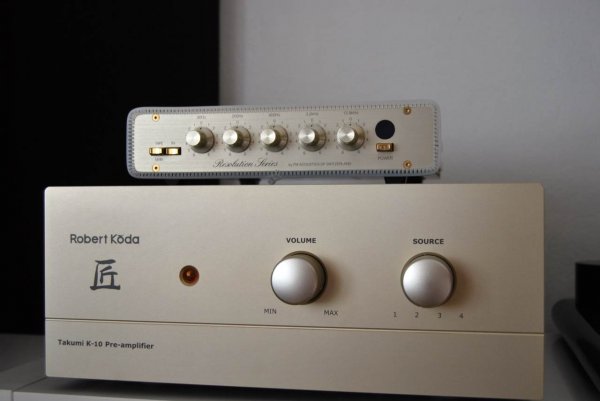From tomorrow's Linearizer - how it works - part 1
View attachment 9356
"While looking at the control panel of the FM 268-C linearizer section one could be reminded of an equalizer. However, the FM 268-C Harmonic Linearizer's mode of operation is rather different and avoids all the problems of equalizers. It's singular characteristics allow linearization of any source by only adding or subtracting critical areas of the audio signal to/from the direct-through signal.
The result: in the FM 268-C there is no ripple in the pass band and no phase shift / discontinuity, which results in pristine signal coherence and superb transient response.
A further unique characteristic is that when all level controls are in full boost position there is no change in frequency response; a linear gain over the entire frequency range is achieved; this is unique, the sign of perfect linearization."
"Thanks to the unique characteristics of the FM 268-C it is now possible to linearize audio signals with the assurance of only positive effects on the direct through audio signal. A good demonstration of the inherent transparency of the FM 268-C is to first listen to the standard signal having all controls in the center detent position. Listen carefully to all frequency ranges. Then turn one of the control, say the 800Hz control and while turning the control, concentrate on another frequency band, say the lower range of voices and low/mid based instruments. You will realize that when turning the 800 Hz control there is no negative effect in the other frequency range! Only the one frequency range that is subtracted or added is changing while the signal remains pristine and totally transparent, exactly like the original signal!
However, do not try to work with the FM 268-C like with an equalizer. It does not work that way. On the FM 268-C Linearizer section every control is dynamic, every movement of one control influences the other. So it is best to control the individual Linearizers dynamically: move one control until you hear it is too much addition or subtraction, then move it back to the point where it becomes a realistic correction. Next, move the control adjacent to it (say the next lower frequency) by turning that control until again it becomes excessive. Turn it back until the setting becomes correct, then readjust the previously set control mildly until the optimum setting between these two controls is found. Then move to the next higher control and repeat the procedure."


